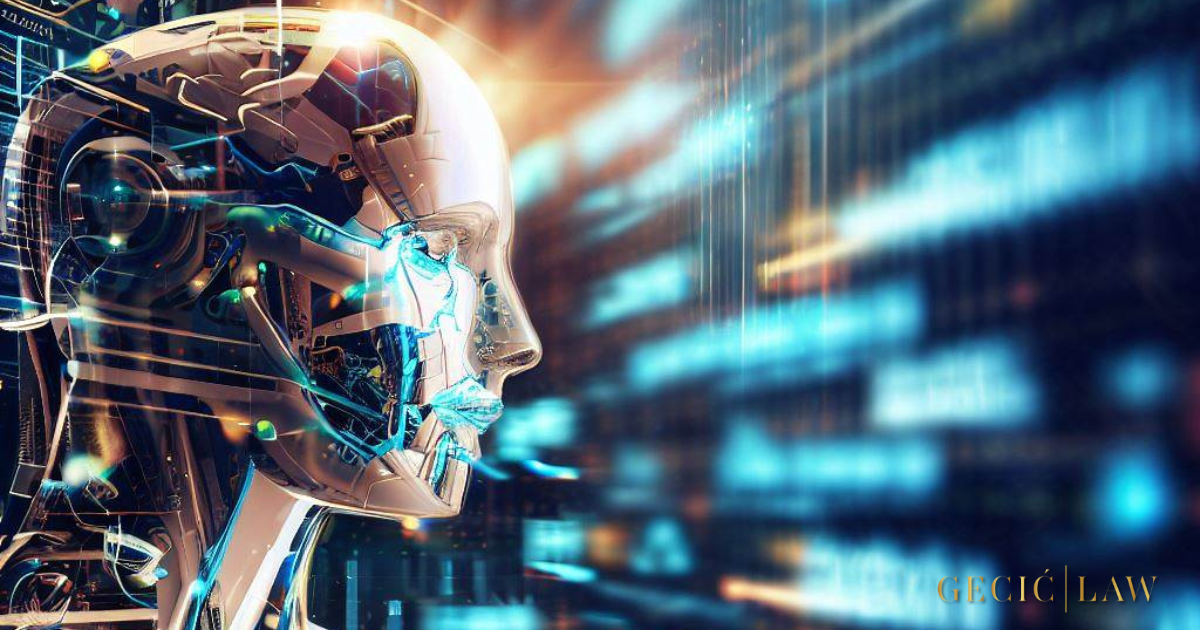

With technological advancements changing both how antitrust laws are enforced and how undertakings violate competition laws, the fourth industrial revolution and the rapid growth of AI continue to affect this area of law, as many others. It is impossible to ignore the potential for AI to conquer markets and its ability to spot and fix basic market balance violations. Despite the benefits of technology for customers, it also threatens their interests by distorting market dynamics and impacting competition.
Using AI presents a potential risk as it allows for price collusion through price monitoring and algorithmic matching software. While companies may legitimately adjust their prices to align with those of their competitors, they are strictly prohibited from sharing information, directly or indirectly, concerning their future pricing strategies through price signaling.
Using price matching and monitoring algorithms and implementing blockchains to effectuate smart contracts presents a novel compliance challenge for companies, especially those operating in markets with a limited number of major competitors. Furthermore, AI has the potential to facilitate the exploitation of market power, resulting in discrimination or the foreclosure of competitors. This may occur through a merger or an exclusive cooperation agreement that combines a vast set of Big Data or when a dominant company possessing such extensive and unique Big Data employs it to discriminate against its competitors or customers.
Per the findings of the 2017 E-commerce Sector Inquiry conducted by the European Commission (“EC“), a significant majority (67%) of online businesses who actively monitored competition pricing utilized automated software systems to track and report prices. Subsequently, many of these entities engaged in manual price adjustments, while a considerable proportion used automated means to effectuate such modifications. The capacity of price algorithms to coordinate conduct has been recognized by various competition authorities (“CA“) worldwide, including the Federal Trade Commission, the UK Competition and Markets Authority, and the Serbian Commission for Protection of Competition.
What is the threshold for determining illegality in market behavior? It is necessary to ascertain whether any unlawful conduct was preconceived (such as through AI instructions) or whether a specific outcome could have been reasonably predicted, even without human authorization, to establish a standard for antitrust behavior. Major players in the Big Data industry may engage in anticompetitive conduct to develop sophisticated algorithms utilizing sensitive data to achieve their desired results. Because these algorithms operate without human intervention, they are autonomous and favorably impact the market. Certain CAs, particularly the EC, have asserted that the direction and control of AI remain with the firm, making the firm responsible for the algorithm’s actions, even if the firm does not directly control the algorithm.
The CA may launch a competition investigation based on various signals, including a complaint submitted by an undertaking, the disclosure of market information by undertakings or individuals, or information obtained by the CA of its own volition. Now more than ever, CAs worldwide are analyzing the potential influence of AI on market competition.
The CAs possess significant discretion in selecting which undertakings to put under scrutiny. Given its limited resources and overriding obligation to the public interest, they must weigh the gravity of any alleged violation against the possibility of detecting and establishing a breach. By employing AI, the CAs can enhance investigative efficiencies in the early phases of an investigation by expediting the identification and analysis of market trends beyond what could be accomplished by human intelligence alone. As the quantity of available data increases rapidly, AI can help the CAs detect trends that could act as early indicators of a market-wide lack of competition.
Historically, enforcement authorities have faced difficulties identifying secret cartels, mainly because of their covert operations. The establishment of legendary leniency programs, which provided incentives to companies that disclose information on their cartel affiliates, has enabled various governments to combat such anticompetitive practices effectively. The question arises whether the onset of AI is rendering the traditional leniency program to the well-deserved retirement.
CAs are considering the option of establishing their own in-house digital forensics units. Some have already designed digital tools that incorporate AI systems for practical use. Others have opted to hire information technology (“IT“) experts to assist case handlers in comprehending how digitalization may improve the enforcement of competition law. CAs also recognize that AI can enhance competition by facilitating targeted marketing and swift, competitive reactions to pricing modifications, potentially resulting in heightened competition, reduced prices, and superior customer service.
While recognizing the potential benefits of employing AI in competition enforcement, it is imperative to exercise short to medium-term prudence to avoid undermining fundamental EU legal safeguards. This entails preventing the risk of enforcement bias or impinging upon fundamental rights such as the right to a fair trial or privacy.
In conclusion, the effect of AI on competition law presents multifaceted and dynamic challenges. Despite the potential benefits of AI in enhancing competition and enforcement through expedited data analysis, it also poses substantial threats, such as enabling anticompetitive conduct and discriminatory practices against competitors and consumers. To achieve a harmonious equilibrium between fostering innovation and competition and safeguarding competition, CAs must navigate this balance carefully. Moreover, they should remain proactive in evolving their enforcement mechanisms to tackle the emerging issues and opportunities arising from the development of AI technology.
Authors: Miodrag Jevtić, Vuk Leković, Nikola Ivković
Image generated by Bing / Dall-E